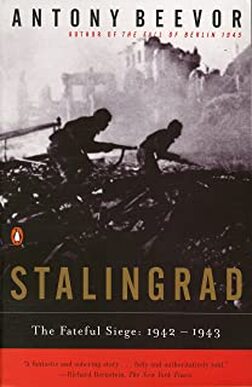 Another book about the first major defeat for the German Army of WWII. It is often called the turning point of the war. I would suggest that the war was lost in late 1941, when Hitler declared war on the US two days after Pearl Harbor, and the German Army was halted one hundred miles from Moscow. There are a lot of good books about this battle, and this is one of them. I will not summarize this book overmuch as I have already discussed the battle in other book notes. Four million men invaded Russia. The German's were famous for their armored Blitzkrieg (lightning war), but they still used more than 600,000 horses! Oddly, had this not been the case, the battle of Stalingrad might have ended a little sooner. When you run out of ammo, you cannot eat your tank. Every German horse at Stalingrad ultimately became soup. Stalin disowned his own son because he was captured by the Germans, which made him a traitor. The Russian railroad tracks were a wider gage than the rest of Europe. The tracks had to be narrowed or the goods transferred to a new train. This was very costly for the Germans. One German (Reichel), against orders, took a copy of the battle plan with him on a recon flight. He was shot down, and the Russians got the full skinny on what the Germans had planned. Stalin was too paranoid to take it seriously. Both Stalin and Hitler loved to issue "Not one step back" orders. To Stalin's credit, he was smarter than Hitler. It took some doing, but Stalin finally realized that allowing an army to retreat could save the army. Not so for Adolph. His stubbornness got the entire 6th Army killed or captured. During the harsh battle, one Russian was shot in the hand. He bandaged it and went to report that he had been wounded. He was taken out and shot. Why? Because he had obviously shot himself and had bandaged the wound to cover up his misdeed! Another Russian was captured, escaped and returned to his unit, only to be shot as a deserter. During the summer, Hitler was told that the Soviets were producing 1,200 tanks a month. Hitler was outraged, in that he knew the sub-human Russians were not capable of those production levels, In fact, they are producing 2,200 a month. In 1942, Russian aircraft production almost doubled. Hitler famously promoted General Paulus to Field Marshal in the hopes that this would cause him to kill himself, rather then be taken prisoner. He did not kill himself. Hitler had actually created four new Field Marshals, including Paulus, as a publicity stunt to distract from the disaster that was Stalingrad. The last German broadcast from Berlin was a faked message from Stalingrad. It was heard in Stalingrad and outraged the those few soldiers who still cared. We are watching a terrible conflict unfold in Ukraine. People are suffering and dying needlessly. And as awful as all that is, it is nothing compared to the hell on Earth that was the Battle of Stalingrad. About 10,000 civilians survived the battle.
0 Comments
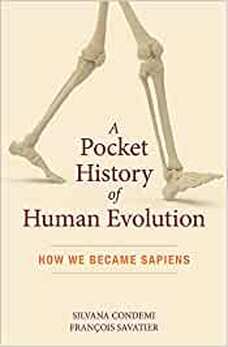 I have very little to say about this book. It is a concise summary of our current understanding of human evolution, from the first words and stone tools to our modern tribal, warring, world. It is only 128 small pages long and summarizing a summary does not leave much but the title. When was fire tamed? How did we become bipedal? These and many other questions are answered, although not always with great accuracy. That is to say, there is still much to learn. The evolution of humanity is complex. There was a lot of interbreeding which just makes things more complex. Short though this book is, each paragraph contains something profound to think about. 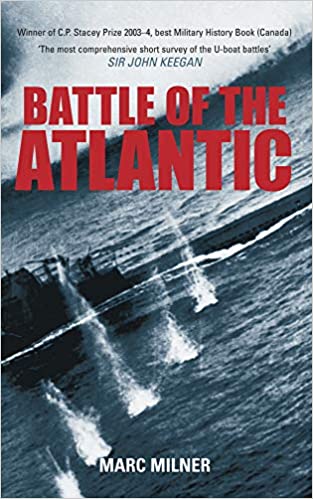 The Battle of the Atlantic (BoA) spanned almost the entire war, making it the longest war battle (any war) by a considerable margin. I found this book very informative, at least as far as ASW (Anti-Submarine Warfare) is concerned, and it has a large number of excellent photos, some only rarely ever seen. The battle was a classic example of move versus counter move, and technology versus counter technology. Britain won the technology wars with the aid of the USA. But in my mind, the real heroes of the war were the Canadians. Because the BoA lasted so long, it is hard to sum up neatly, or even find a specific turning point. If you saw the movie Greyhound w/Tom Hanks, you should try to forget it. While the ASW was pretty authentic, the idea of a American rookie destroyer captain leading three British escorts in herding a convoy across the Atlantic only one month after the US entered the war is a non-starter. The screenplay was written by Tom Hanks, and he succumbed to the lure of making the war all about the Americans. Admiral King ran the entire US Navy. He did not like the Brits and dismissed any and all of its sub hunting experience as twaddle. The British had been fighting the BoA for well over a year at that time. They had developed standards of practice that proved very effective. The US would enter the BoA in earnest after they started getting their own ships sunk off American waters. A much better, hard to find, movie about Canada and sub chasing is called Corvette 225 with Randolph Scott. It was a US production, but was very accurate in its depictions of Canada's role. In the BoA, the heroes were Canada (in part because we did more than our fair share) Britain, and the US… in that order. The Canadian Flower Class Corvette was a major player on the BoA. It was a small, single screw, sub chaser that played a large role. You would not want to be on one. Canadian destroyer crews used to joke that Corvette crews should receive submariner pay since its Corvette's forecastles spent so much time under water. Later versions enlarged and redesigned the forecastle to ease this problem. Later, twin screw versions of the Corvette were built and dubbed Frigates. The major technologies for the allies at play in the battle were: Huff Duff (HF/DF or High Frequency Direction Finding): Huff-Duff detected radio signals and calculated bearings and ranges. The Germans did not believe that the Brits could put radio direction equipment on a boat as it would be too bulky. This error in judgment would cost them. ASDIC (aka Sonar): This technology improved with every passing year. Active sonar used the infamous "ping"; passive listened for screw noises. RADAR (10cm and 3cm wavelengths): Radar at sea was a huge advantage. The shorter the wave length of the radar signal the better. It is a basic law of physics that you cannot see anything that is smaller than the wave length of the light being used. Radar is a kind of light. If you want to see a periscope, 10cm radar would catch it. If you want to see a sub snorkel, you need shorter wave lengths. Radar equipped airplanes would sink more submarines than any other mode of attack. Leigh Lights: Once an airplane, often a Sunderland flying boat, saw a sub with radar at night, it would sneak up on sub until they were almost on top of it, then turn on their very bright Leigh Light mounted under the plane flooding the sub in light, and then drop contact bombs. This meant that German subs were vulnerable when running on the surface, even at night. Running on the surface was required to recharge the sub's batteries. Air Dropped Acoustic Torpedoes: Of course, a sub chaser cannot launch an acoustic torpedo against a submarine because the ship itself is too noisy, as are the other convoy ships. But an airplane can, which they did to great effect. A typical scenario would be: A Sunderland or Liberator spots a sub radar during the day; it attacks; the sub spots it and dives; the airplane swoops in and drops its torpedo; which chases the sub into the deep and kills it. Hedgehog and Other Contact Munitions: The hedgehog was a large number of forward launched, small, fast sinking, contact bombs. A depth charge is a large explosive which can sink a sub from 20 feet away. The hedgehog was a small contact bomb. If it hit the sub, it would hole the pressure hull, and kill the sub. SQUID: SQUID was a single powerful shallow water, forward launched, depth charge that was slaved to the ASDIC signal of the sub. At just the right time (as calculated by a mechanical computer), as the sub chaser bore down on its target, the SQUID would be fired at the diving sub and explode at a depth based on the ASDIC signal. They were very effective. Shallow Water Depth Charges: Aircraft had no use for the heavy ship borne depth charges designed to sink a submarine at depth. What they needed was shallow water depth charges that could be dropped on a diving sub. They arrived later in the war. Code Breaking: Alan Turing and his code breakers cracked the German naval enigma machine codes. The Germans famously added a fourth rotor to the enigma machine, and Bletchley Park went silent for a year. After that, they were back in the cat bird seat, often cracking German intercepts before the Germans could. That is, they knew where German subs were better than the Germans. The code breakers of Bletchley Park saved thousands of lives and millions of tons of shipping. The major technologies for the Germans at play in the battle were: Subs, and Lots of Them: Compared to a ship, or especially a loaded ship, submarines were cheap. The Germans produced hundreds of Type VIIs (smaller, inshore subs); Types IXs (larger ocean going subs, the German mainstay); milchkuhne ("milk-cow") resupply-at-sea subs; and Type XXIs (equipped with larger batteries and the snorkel). U-boats were literally numbered on their coming towers (the index of this book, under "U" for U-Boat, is very long with entries like U-751, U-752 etc)), and at the wars end, 1,162 had been built! The Snorkel: The snorkel is just what it sounds like. Subs burned diesel and diesels need air. Some Type IXs were retrofitted with snorkels. The war ended in early May, yet in March, 1945, German industry still managed to pound out 100 type XXI subs! But it was too little, too late. Metox: Metox was a detector that warned subs if they were being scanned by radar. It could detect 10cm radar, but not 3cm until well into the BoA. GNAT (German Navy Acoustic Torpedo): When the first such torpedo was fired, it was plain to the people on the target ship that the torpedo was following the ships screw/engine noises. Within days, the Americans create a towable noise maker that defeated the torpedoes. Unfortunately, the US noise maker would shake itself to pieces very quickly. A Canadian design was adopted that worked perfectly. Decent Torpedoes: At the start of the BoA, German's were using magnetic exploders which proved to be very unreliable. They switched to contact exploders, which reduced their kill rate dramatically. Why? When a torpedo with a magnetic exploder passes under a ship, it explodes breaking the ship's back. Many ships required two direct hits with contact torpedoes to go down. The submarine war was the least survivable of German services. All the major sub aces of the war were killed at sea, remarkably the three most famous in just one month. Sixty three percent of submariners never returned home, making it the least survivable service on either side. On the surface for the allies was the Canadian, Johnny Walker, and many others. Walker fought through most of the war and racked up more sub kills than another other skipper. He developed many of the allies' ASW tactics. He died before the war ended of natural causes. The BoA was never really winnable for the Germans. Ultimately, American industrial might would have saved the day. As it was, the Americans were late in, and the BoA was characterized by moves and counter moves. The Germans were slow to adopt new technologies. The Canadians and British quickly adopted radar, HuffDuff, ASDIC, sonar, and the first true computer at Bletchley, called Colossus, for code breaking. 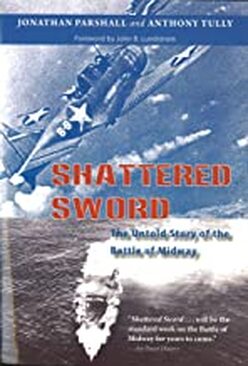 I reaOne description of the Battle of Midway is this: Up until about 10AM local time, Jun 4th, 1942, the Japanese were winning the Pacific war. Six minutes later, three Japanese carriers were afire; the fourth would join them shortly; and the tide of the war would change. For the record, the aircraft carriers in the BoM were Akagi, Hiru, Soryu and Kaga for Japan, and Yorktown, Hornet and Enterprise for the Americans. Most scholars view Midway as a fourth carrier in the battle. The most precious resources were flight decks, so that makes sense. Technically, the Japanese were losing the war the moment they started it. Japan is resource poor. Oil, iron etc. all had to be shipped in. The following statement is telling: The Japanese had four to six fleet carriers and a handful of escort carriers when the BoM was fought. They had zero new carriers in the pipeline for the next year. The Americans had three carriers in the Pacific and twelve in the pipeline… one new fleet carrier every month! This was a most interesting book. I will not review the contents in detail, as they were already described in Miracle at Midway (REF) by Prange which I have summarized elsewhere. This book was written by American authors who wrote it from the Japanese point of view. Careful review of Japanese battle records allow them to dispel a number of myths that have survived the decades since the war. Most of the myths came from a Japanese author who was there: Cdr. Mitsuo Fuchida. He led the attack on Pearl Harbor and wrote "the" book on Midway in1955 called Midway, The Battle that Doomed Japan. He had an agenda and he lied. He tried to suggest that if the events at Midway were timed just a little bit different, the Japanese might have won. He was wrong. One fact I found interesting was this: The Akagi (Nagumo's flagship) was almost hit by a bomb just off the fantail. The shock of the explosion jammed the ships two enormous rudders, sealing its long term fate. This is eerily similar to the fate of the Bismark. After the BoM, all four Japanese carriers were ablaze. None would sink as a direct result of American attacks. Rather, their burnt out hulls were sunk by Japanese torpedoes. The scale of the Japanese operation was huge. It would consume an entire year's worth of operational consumables like fuel. The Japanese were ahead of the Americans in multiple-carrier tactics and it showed. The first three groups from Yorktown, Enterprise and Hornet arrived at different times. Had they been properly coordinated, the battle would have been won on first contact. Admiral Nagumo, who led the Pearl Harbor attack, commanded the Midway forces. He did not know about the Americans carriers until it was too late. The task for Nagumo was to prepare Midway for Yamamoto's invasion fleet following a day behind. One of the myths exploded in the book is Nagumo's decision making errors with respect to arming planes for land attacks (bombs) or sea attacks (torpedoes). But first, a word about "spotting". "Spotting" is the term given to the on deck flight preparations just before launch. Japanese planes used rotary engines that needed to be warmed up for some time. A deck officer fires up the plane and checks all of its systems before launch. All other activities were generally done below deck, including fueling and arming. Having armed and fueled planes below decks is not a good idea, as time would tell. The way the Japanese prepped planes had a number of bottle necks, including access to the hoists that raised ammo up to the airplane decks and, more importantly, ammo carts. The lack of ammo carts would become a major issue. Thousand pound bombs and two thousand pound torpedoes need carts to transport them to their planes. They also require special mounting brackets for each. The carts became an especially scarce commodity when a plane's armament had to changed, which required two carts. It is not clear why these carts were so hard to come by. When the fighting got tough, the Japanese also had to stow ammunition to one side, rather than returning them immediately to the ammo storage areas below the water line. Pilot Jimmy Thach became famous during the B0M and his name is given to an air tactic that threw the Japanese CAP fighters into chaos. The Zero was the best fighter in the world at the time. It was, maneuverable, well armed and had superior rates of climbing and turning. It also had a bad radio. However, the US Wildcat was tough. The pilot was well protected and the gas tanks were self sealing. The Thach Weave worked like this. A lead US plane and his wing man (above him, behind, and to the right) would draw a Zero in to attack. It would naturally go for the trailing wing man first. The wing man's tough Wildcat sucks up the hits and splits to the right. The lead plane splits left and, in a coordinated move, they each reverse course: lead to the right, wing to the left. This brings the attacking Zero under the guns of the lead pilot. This was the first time these Japanese pilots had been stared down and shot up! They were baffled. The Thach Weave went on to be used to good effect at Guadalcanal. The book's research is used to explode several myths about the BoM. Midway was won largely by code-breaking, a measure of luck, and Japanese arrogance sometimes called "victory disease". Both sides were happy with the myths: The Americans overcoming the odds and the Japanese being unlucky. Neither is true. When the Japanese were war gaming the attack, young officers who posited dispositions of the Americans that did not fit with their assumptions (i.e.: the Americans were all but beaten already) were belittled for going against doctrine. This completely defeated the purpose of war gaming. Of course, those officers turned out to be right. Ironically, one of Japan's major doctrines was to always hit the enemy as hard as possible the first time. I.e.: throw everything at them at once; overwhelm their defenses and crush them. Instead, the fleet sailed leaving two carriers behind in Japan; and Nagumo was ordered to hold back a reserve when they launched against Midway. While not really punched hard in the book, the American carriers were simply better ships. And they had radar: an enormous advantage. Most Japanese carriers were built on the hulls of other ships and had a kind of Rube Goldberg,/Mechano-Set look to them that gave away their Achilles heel: light armor. American carriers were purpose built and where considerably better engineered, especially when it came to damage control. Many US systems had redundant backups, and the US deck crews were in the habit of draining fuel lines when not in use. The Japanese saw damage control as a specialists job. The Americans made sure every crewman was well versed in basic damage control tactics. These differences would make themselves known in the battle. Another interesting difference between the Americans and the Japanese was the set up of command and control. The Japanese's bridges were very small cramped affairs with very few people on hand. The bridge of a US carrier was huge by comparison. The Americans introduced the concept of a Combat Information Center to coordinate information flow. The Japanese had nothing of the sort at the time. I really liked this book. It was much more analytical than previous histories of the events and will stand as the new bible on the subject for some time to some. Many interesting photos and detailed descriptions of carrier tactics and practices. Here is a recap of the myths discussed in the book:
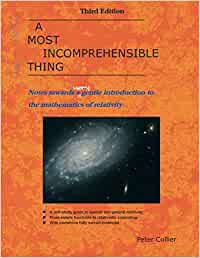 This is the best book on General Relativity (GR) that I have read. It took me four tries to get all the way through it. Each time it got a little easier. Normally, I would describe the contents of the book in notes form so that I could review the book again later. I cannot do that here for several reasons. There is a lot of math. You need special software to typeset math. You cannot begin to understand GR without it. But I cannot even write down his famous equation (it is actually quite short, only 9 characters long, with proper assumptions), or any of the mathematical statements because they are hip deep Greek letters, superscripts, subscripts, indexes, tensors and mathematical operators. For the record, I got through 2nd year university mathematics before switching to computer science. I thought myself quite good at math in high school (# 2 in the school, as I recall), but that is a far cry from the mathematics needed for GR. You must be familiar with basic calculus to get very far in this book. The mathematics of GR is called "differential geometry" and it is based on tensors. Tensors were difficult for Einstein, so I do not feel bad that I find them hard too. A tensor is a lot like a matrix. Matrices can be added and multiplied etc much like ordinary numbers. A matrix is a tensor if after any valid tensor operations or transformations, a certain calculated value derived from the tensor always remains unchanged. That value can be thought of as the "distance" between two points… also called "the metric". Part of what Einstein did is formulate several possible metrics that conform to his GR principle. Here is what GR says: Space tells matter how to go; Matter tells space how to bend. That is it really. We live in a flat Euclidian world. We can carve up our world using a simple coordinate system to locate things in time and space, and we use Pythagoras' famous equation for the metric. We need to add one more space term because we live in a three dimensional world, and another for time, but it works exactly the same as original 2D Pythagorean formula we all learned in high school. You will often see the time coordinate multiplied by "c", the speed of light, but that is just an artifact of a units choice. If you measure speed as a fraction of "c", the "c" disappears. GR is extremely difficult mathematically. Finding general solutions to Einstein's equation is damn near impossible. But if simplifying assumptions can be built into the metric, things get easier. The metric in GR is the goal in many ways. The most famous one is called the Schwarzschild Metric. It describes a non-spinning, chargeless, mass in empty space. It was used to derive some of the more interesting aspects of GR, such a gravitational red shift and gravitational bending of light. It is worth mentioning just how important one idea is to GR. This is Einstein's "happiest moment"… the realization that the Equivalence Principle must be true. Stated simply, it says there is no experiment that can be performed that can distinguish between a uniform gravity field, and uniform acceleration. One of the main reasons it took so long for the formulation of relativity is that we, walking about on the Earth, are accelerating. That is, we are not in an "inertial frame of reference", which is one that that moves at a constant velocity (i.e.: no acceleration). If we could observe everything from such a vantage, the basic laws of motion would have been blindingly obvious. From an inertial frame of reference, a hit baseball travels in a straight line forever. The fact that our frame of reference is accelerating turns it into a parabola and makes it hit the Earth. We live in a very nearly uniform gravity field. It is not uniform, even for an ideal Earth (perfectly spherical and of uniform density), because the forces of gravity diverge a tiny bit (resulting in tides). If you drop a ball, it falls to the ground at 32 ft/sec/sec. If you are way out in space in a space ship that is accelerating at 1 G exactly, and you drop a ball, the exact same thing will happen. And there is no way (in physics) to tell the difference. This simple realization is one of the core assumptions upon which GR us built. Mercury's perihelion (closest approach to the sun) precesses. That is, it moves very slowly, taking 225,000 years to get back to its original point. The fact that they could make these fine measurements around 1900 is astounding. Most of that precession can be explained by Newtonian calculations of the tugs of the other planets. But not all. A tiny bit was left over, and Einstein said that relativity could account for the it. This was verified. This is incredible accuracy. A second of arc is the width of a penny at 2.36 kilometers! What was at issue was 43 seconds of arc per century! And that is exactly what GR predicted. Eddington famously went to the island if Principe in 1919 and did measurements of star positions very close to the sun during a total solar eclipse. They were deflected by the mass of the sun (which Newton would not have predicted). Space around the sun was bent, as predicted by Einstein. I made a lot of written notes as I worked, and reworked, my way through this book. I will use them when I tackle it one more time in 5 years or so. One does not have to be able to follow all of the math in this book. God knows I did not. But it is possible to see the math from a slightly higher perspective and understand that "this bit of the formula accounts for this, and that bit for that", etc. Fun fact: We all know Einstein's most famous equation E=MC2 that "popped out" of Special Relativity, Namely energy equals mass times the speed of light squared (a very large number). Apparently, the derivation of this famous equation involved many pages of calculations (i.e., equation manipulation). And just when it all seemed like it was going nowhere, all the various terms canceled each other out, leaving the one equation we all recognize. I really enjoy digging into this type of "origin, workings, and fate of the universe" physics. It is like looking the god of Spinoza right I the eye, and as close to the Rapture as I will ever get. . 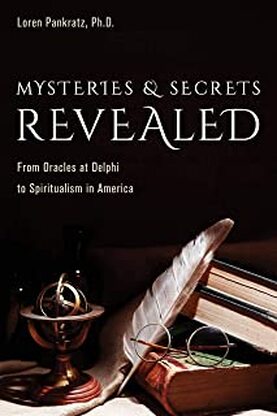 I wrote The God Con some years ago. A central premise of the book is that organized religion is indistinguishable from a con. I argued that our early ancestors quickly discovered that you could say almost anything, and as long as you say it right, perhaps with a little "magic" thrown in, you will be believed. Belief morphs quickly into power. This book starts with the Oracle at Delphi, which is a case in point. It was a con. I have often also argued that out ancestors were just as clever as we are. When to comes to messing with people's heads, they were probably better at it than psychics are today because their audience was much less sophisticated. I would have cited this book heavily had it been available when I wrote mine. Loren Pankratz was a member of the BC Skeptics. He knows many of the people I admire, including Barry Beyerstein, Ray Hyman, Jerry Andrus and others. He was a past president of the Oregon Magic Society and he is a psychologist, so he is well equipped to address how old tricks were used in the old days, from the Oracle at Delphi to the Fox sisters in the 19th century. He has over 9,000 books in his basement library, and it shows in the enormous bibliography that the book contains! If you are curious how some magic tricks work, you will not be disappointed. As a magician himself, he only reveals as much as is necessary to make the point. One of the bits of magic (aka technology) 2,000 years ago was a speaking tube. You ask a question, and an answer seems to come from out of nowhere. It was actually a person in a different room speaking into a tube that directs the sounds into the targets earshot. The Shrine of Bacchus was a 2,000 year old model that moved, spewed wine and spoke. It was driven by a complex set of weights, pulleys and gears. We would yawn at it today, and call it cheap animatronics. But a look inside would convince you someone spent a great deal of time working it all out. The book's chapters are chronological. Each discusses an aspect of trickery combined with greed and power. One such con was astrology, where weasel words were invented. E.g.: Do not say "You will get X", rather say "You might get X". A noted clear thinker, Cardano, in the 1500s, said "I was born in a rare century which has come to know the whole world." He was both right and really, really wrong. The RCC (Roman Catholic Church) plays a big role in the history of science (which they hated) and trickery (which they embraced). Galileo was famously imprisoned, and Giordano Bruno was burnt alive, for simply stating ideas. A good many of the middle chapters of the book deal with the demise if Aristotle's ideas, the evolution of scientific philosophy, and the clash between it and religion. The first clairvoyant con artist was a guy named Didier. He spawned a whole industry of mentalism hucksters, including the Fox sisters which is where my knowledge begins (I have been reading The Skeptical Inquirer for 35 years and the Fox sisters are often raised). The Fox sisters used a number of techniques to create "rapping by the spirits". Pankrantz peels these cons apart with ease. Didier often used the "shyness effect" as an excuse when he failed. The idea is that nearby negative thoughts or energy will keep the spirits from their appointed rounds. Isn't that convenient. As it turns out, women were more likely to become mediums. Why? Because they had an advantage. They were women, and no self respecting man of the day would admit that some female could be so clever as to pull one over on them. That was one argument for why it had to be spirits. The other was the oft repeated, and always regretted, line that appears often in various forms in history. Here is an example that referred to the "psychic" Palladino: "… the manifestations … were clearly beyond the possibilities of any conceivable form of conjuring…" To borrow from the Princess Bride, I don't think he knows what "conceivable" means. This kind of colossal arrogance is what keeps psychics in business. Most of these hucksters were unable to fool scientists, such as Faraday, or trained magicians such as Robert-Houdin, and Eric Weiss (aka Houdini). Common techniques including the "down-the-nose-peek" when performing blind-folded, and code systems were used between assistant and performer for the "what am I holding" form of mentalism. The codes used were often very clever, and gave the impression of, once again, spirits. Two chapters deal with hypnosis, which was all the rage in the 1800s. This book is a tour through the ages as magic and con artistry evolve. The same cons used hundreds of years ago are alive and well today. Do not underestimate the cleverness of these charlatans, past or present, nor the lengths they will go to, get your money. The book is not as long as it appears at first glance due to the length of the notes and bibliography sections. It would have benefited from a slightly larger font too (or I am just getting old). This is a must-have book for all people of a skeptical bent. 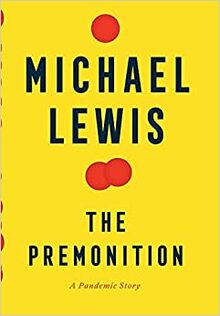 Michael Lewis's books are never dull, and often very eye-opening. This one is no exception. This is not his best work, but still worth a look. The book lacks an index. In today's world, one could index a book of this size in a few days. There is no excuse for not having one. But that is a minor quibble. Lewis' books are interesting narratives wrapped around important issues. This book is about health care and epidemics. The players are a number of really smart people surrounded by gutless, bureaucratic pencil pushers. It is difficult to summarize the story and I will not try. Charity Dean is one of the good guys (gals, actually). Smart and insightful. Ditto Carter Mecher. They both had the courage of their convictions and were able to think outside the box. One thing that the book makes clear from simulations and history is this: Shutting down schools is imperative in an epidemic! The CDC was against it for political reasons. We are still arguing over that today. The book's bad buys are politicians and the CDC. The CDC is now headed by a political appointee. That is bad. When Trump hired John Bolton as a security advisor, the first thing that dim bulb did was to dismantle the epidemic threat team. When Americans were repatriated from Wuhan, the CDC declined to even test them (because they were "prisoner's"), despite the fact that they all wanted to be tested. Politicians (i.e.: Mike Pence) forbade anyone from saying anything that might alarm the public… even if it was true and important for their survival. "Just in time manufacturing" is a broad term for using computers to anticipate demand and save money. The down side of this is that there is no depth to the system because inventories were kept at minimum levels. In other words, spikes in demand will break it. And that is what happened. There are two ways to fight an epidemic. One is vaccination and a charge toward herd immunity. The other is to contact trace and stamp out each occurrence... a labor intensive exercise. The latter technique was used to stamp out small pox world-wide. There are now genomic tests that can rapidly identify which variant of COVID a person has. Because COVID changes over time (at a useful pace… not too fast, not too slow), testing can determine not only what you have, but also from whom you got it. The US government, and Canada's too, ignored this route. The correct thing to do is both. Fun facts: The US did less genomic testing than any other advanced country in the world. It is estimated that the Mango Mussolini is responsible for roughly 200,000 US deaths. 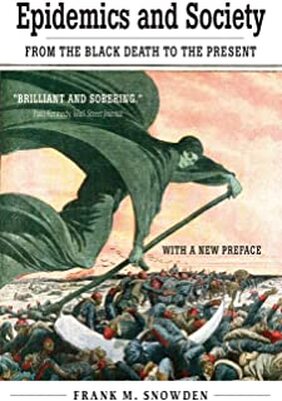 Snowden is a Yale University professor of Medical History. This is a big book. Five hundred pages with a small font and tight leading. It consists of 22 chapters, in chronological order, each basically dealing with a different disease and/or time period. Each chapter can be read stand-alone as a short essay. Each essay discusses the disease; how it is transmitted; how it was dealt with, how effective those actions were; and its impact on history. I am a slow reader. The fact that this book held my interest from page one to page five hundred is telling. Even a brief summary of each chapter would make this a long document. The book was published just before the COVID pandemic really got going. It is impossible to read it and not compare the actions of today with those of previous generations fighting other diseases. The main diseases discussed include the black plague, small pox, yellow fever, dysentery, typhus, cholera, TB, malaria, polio, HIV/AIDS, SARS and Ebola. Do you know what a bubo is? Neither did I. A bubo is a swelling and hardening of a lymph node, and it is the root word of Bubonic Plague. It is not possible to sum up such a large volume in just a few words. So I will cherry pick a few notables. In the beginning, there were the Humors. There were four because back then they liked that number. Four cardinal points, four winds, four seasons so… four humors. "Balancing the humors" gave us bloodletting. A really stupid idea. Like most diseases, the Bubonic plague had multiple variants… some worse than others. The rat borne flea was the vector, but not all fleas, nor all rats, were equal. The etiology of the plague is complex, which explains why it took so long to understand it. As most people know, shipping carried the rats and fleas from port to port, creating pandemics. The locals would grasp at and blame anything and anyone that they thought might be involved… like Jews for example. A recurring theme through history is religion sticking its nose in where it did not belong. From blaming Jews in the 1300s to burial practices used in the Ebola outbreak. Ignorance and religion made the problems much worse. Smallpox has been eradicated. But in the past it was feared and weaponized. The reason we were able to get rid of smallpox is because it has no animal hosts in which to hide. Edward Jenner used a similar disease, cowpox , to create a vaccine-- the first in history. Smallpox is extremely nasty, and yet the objections to the vaccine then (government over reach, religion, and science denial) are the same as they are today. In an odd turn of history, yellow fever led to the liberation of slaves on Hispaniola. It so decimated the population that fresh "unbroken" slaves had to be imported all the time. Soon, these uppity new slaves had the upper hand and the island became independent. Disease has had huge influences on politics and war. When Napoleon drove to take Moscow, he was beaten by several factors, including typhus and dysentery. In the 1700s, medicine started to make large advances toward the modern world. The French School was born. TB (aka consumption) was one of its targets. TB created its own fashion trend: Rail skinny women, with a grey/white pallor was the rage. TB and cholera led to sanitation (and the Sanitary Report) that gave us modern sewers and clean streets. Cholera is passed in large part from human feces to human mouths. Staying clean became important. In the 1800s, Louise Pasteur pushed the germ theory of disease. It was mocked by many until he developed a vaccine for anthrax, saving France from the economic ruin of their sheep and cattle dying by the thousands. Pasteur also created treatments for rabies and invented pasteurization, which saved countless lives. With the microscope came lab medicine. Bacteria like TB could be seen under the microscope, allowing for accurate diagnosis and an interruption to the transmission chain. It also led to anti-bacterials like streptomycin. Malaria has probably killed more than any other disease. This is because it has been around longer than any other. This make the mosquito the worst killer in history. Malaria and Yellow Fever are both mosquito borne. Polio has proved hard to get rid of. But we are close. If we can eradicate it, it will be the second, and probably the last, disease to be thus dispatched. The book closes with AIDS and Ebola. AIDS is mostly transmitted by heterosexual contact, not homosexual contact. A recurring theme in the book is that disease generally hits the poor much harder than others. Genetics also play a role. For centuries, and to this day, the disadvantaged are blamed and most impacted by disease, while those less at risk turned their collective backs. All in all, a fascinating read. My only regret is that much of it will disappear from my brain because diseases and their etiologies are very complex. Most diseases come in various strains, as we are finding out with COVID. And stupid people who avoid vaccines are part of that problem. They increase the number cases and thus the opportunity for mutations to develop. A pox on them all. 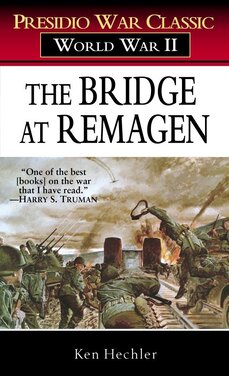 There were three memorable bridges during WWII: 1) Pegasus Bridge, just off the D-Day beaches, which was taken by the first men to land at Normandy. It got its name from the patches worn by the soldiers who took it; 2) The bridge at Arnham, known better as "a bridge too far"; 3) The Bridge at Remagen. The three bridges were featured in the movies The Longest Day; A Bridge too Far; and The Bridge at Remagen. In war, if you are the attacking force, you want bridges down as they are used to supply the enemies with material. But as you approach these bridges, you want them up so you can use them and they can supply you. For the defenders in retreat, bridges are blown as soon as they are crossed to slow the enemy down and choke their supply lines. Finding a major intact bridge in the heat of modern battle is rare indeed. That all seems simple enough, but timing is everything. Hitler, ever the paranoid, insisted that bridges be blown… but only with explicit written orders from above. This created a problem, as these two requirements can be in conflict in the fog of war. Blow the bridge too soon, or without orders, and you get shot . Don’t blow the bridge in time, and you get shot. Middle tier officers were keenly aware of this at Remagen. You may wonder about the title of the book. The actual name of the structure was the Leddendorf Railroad Bridge. To get to it from the west, you travel through the town of Remagen. Upon crossing the bridge, you are in the smaller town of Erpel. The tracks on the east side of the Rhine immediately enter an east-bound tunnel under a large cliff face that overlooks Erpel. The Americans did not expect to find an intact bridge. Prior to their arrival, they did their level best to destroy the Luddendorf Bridge, and after their arrival, they tried to save it. The Americans were expert at building pontoon bridges, but they had a draw back. They were designed to carry Sherman tanks which had a very narrow wheel base. The Pershing tank had just arrived on scene, but its much wider wheel base could not be easily accommodated. A real bridge would be a godsend. On paper, the bridge was reasonably well defended. But Germany was scraping the bottom of the barrel and the bridge only had 41 able men to defend it. Hitler youth and old men where there, as well as Eastern "volunteers" (slave laborers). This raised the total to about 500. The local population knew the score. They simply wanted to survive the next month or two. Desertions among the ranks were common. The bridge had been prepared for demolition. Demolition wires ran down a steel conduit to the various bridge weak spots. Back up fuses were also in place. But no explosives! They had not arrived yet. As alluded to, a different nearby bridge had recently been destroyed too soon, and the man responsible was shot. All of the officers were well aware of the risks to them personally. This was exacerbated by a hopelessly complex and overlapping command structure. In other words, no one knew who was in true authority. When the explosives did arrive, they got 300 kilos instead of 600, and the explosives were industrial grade… considerably weaker than military grade. When 2nd Lt. Timmermann saw that the bridge was intact, he could hardly believe it. They wasted no time in attacking. As they approached the bridge, a huge explosion created a large crater immediately in front of the west end of the bridge. This was intended as a tank trap. Artillery launched pozit shells at the bridge, and Pershings fired at the east end. "Pozit" was the name given to one of Americans secret weapons: ground proximity radar shells. The shells had a small radar device in them that caused them to explode at a set distance above the ground. These shells were incredibly effective at killing exposed enemies when they were introduced at the Battle of the Bulge. They allowed the Americans to clear the bridge of unsheltered defenders without destroying it. The Germans knew they had little time. They had quickly prepared the bridge to blow, and they gave the order. The button was pressed and… nothing! A lucky tank shell had cut the conduit. However, the back up fuse was still in place, and through a hail of American fire, the Germans managed to set it off. The bridge disappeared inside the huge dust cloud created by the explosion. When the dust settled, it was still there! The weaker explosives failed to do the job. The Americans wasted no time in crossing the bridge on March 7th, 1945. Timmerman was the first officer was cross the Rhine. The east end of the bridge was secured. Pershing tanks, with bulldozer blades attached, filled in the west end tank trap, and the Americans poured across. The Germans mounted several counter attacks, but were unable to dislodge the Americans. The German chain of command was all but broken. Hitler, as always, tried to take personal control. He fired von Rundtstedt, which was not a good idea. He had V2s fired at the bridge, without effect. The German Luftwaffe expended its last trying to destroy the bridge. On March 17, the bridge, battered and beaten, simply collapsed, killing 20 or so combat engineers. The traffic load, constant explosions, demolition damage etc was finally too much for it. That was when the Germans got busy doing what they were really good at: shooting people. A drumhead court was set up, led by one fanatical NAZI, to find and punish the guilty. Many officers were "tried" in only a few minutes, marched out the door, and shot. Bratge, the German officer who was primarily in charge of the defense of the bridge was sentenced to die too, but the Germans were too busy killing other folks, and he survived the war. The bridge at Remagen materially hastened the outcome of the war. As a consequence of it falling into American hands, 300,000 Germans were captured in the Ruhr valley. Timmermann and many other received the Distinguished Service Cross, the highest award the army could give and second only to the Medal of Honor. Unit citations were also awarded. The book lacks an index, which is a pity. The writing is clear, precise, and unbiased. These stories are really about men in battle: the bonds between them, the way decisions were made, the heroic deeds performed by individuals, and, of course, the loss of young men to enemy action.  If you have seen the movie The Longest Day, and remember it, then you aware of part of the story of Pegasus Bridge. It was a critical bridge assigned to the British to capture. A word about names: The hero and leader of the Company is John Howard, played by Richard Todd in the movie. The attacking British crew included a chap named Todd Sweeny (his parents had a sense of humor), and another whose last name was Sweeny. Both were called Todd. And another fellow was named Pine Coffin! The D-Day targets for Howard and his men were actually two bridges. The Orne River and the Caen Canal run parallel to each other at this point, flowing roughly north to south, with the D Day beaches to the east. Benouville Bridge crossed the canal to the west. The Ranville Bridge crossed the Orne river to the east. There were about 500 meters apart. The aim was to land three gliders next to each bridge (six in total), take them intact, and hold until relived. It was to be the first action of D-Day starting at midnight on the morning of the 6th of June. The bridges were almost certainly wired for demolition. These bridges would be critical in getting men and material off the beaches and inland, Howard's glider hit the dirt only 50 meters from the Benouville bridge. The first soldiers to touch D-Day dirt were actually the glider pilots. They were both pitched through the glider windows and knocked unconscious. The other gliders also landed successfully, but a little further away. The first soldier to fire a round on D-Day was Howard himself. The whole company was known as D Company. They each sported a patch displaying Bellerophon astride Pegasus, the winged horse. The Benouville Bridge was renamed after the war to Pegasus Bridge and Howard had a street named after him in Benouville. The German garrison was run by von Luck of the 21st Panzer Division. It consisted, in part, of soldiers who were essentially slave soldiers: Poles and Russians and such, poorly trained, ill-disciplined, and disinclined to get shot at. The bridge was indeed wired, but the explosives had not been put in place. The soldiers on guard that night were caught napping. Both bridges were taken in fairly short order. Then the soldiers had to wait, both for paratrooper reinforcements to arrive, and for the inevitable counter attack by the Germans. The big fear was of the tanks stationed in nearby Caen. A counter attack did come and was repelled. But the main tanks never came because Hitler was famously snoozing and no one had the guts to wake him. Von Luck could not act without Hitler's OK. The airborne troopers did arrive… late and under-manned. Many troopers got lost in the surrounding woods. It was the sound of combat that actually lead them to their target. As per the movie, Lord Lovet came off the British beaches and headed straight for the bridges to relieve Howard, and they did so in style, with bagpipes playing. The rest, as they say is history. Caen was a stubborn target. The allies struggled on the beaches for much longer than planned. The town of Benouville was the first to be liberated. The owners of a local inn were the first to greet their liberators. They hosted get-togethers for the vets for decades after the battle. This book was based on interviews with the people who were there. It is a fairly quick and enjoyable read. Some good guys were killed, but for the most part, the story is one of valor, dedication and victory. |
AuthorLee Moller is a life-long skeptic and atheist and the author of The God Con. Archives
January 2024
Categories
All
|
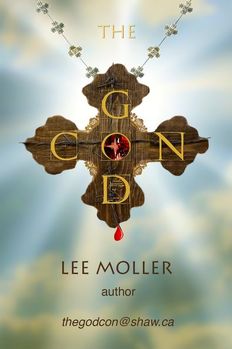
 RSS Feed
RSS Feed